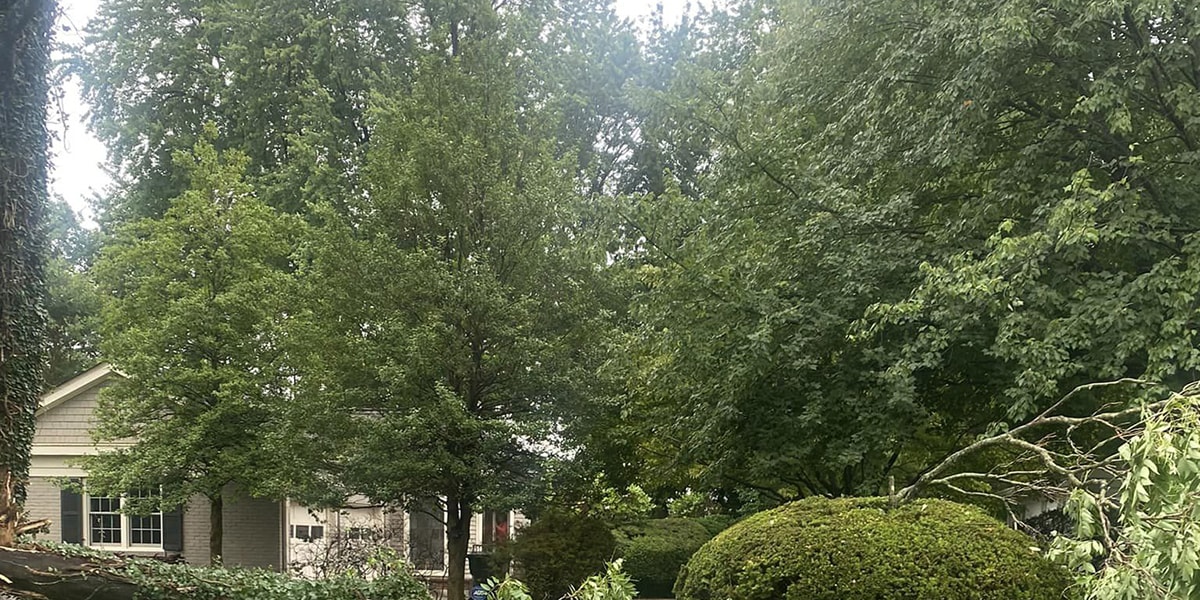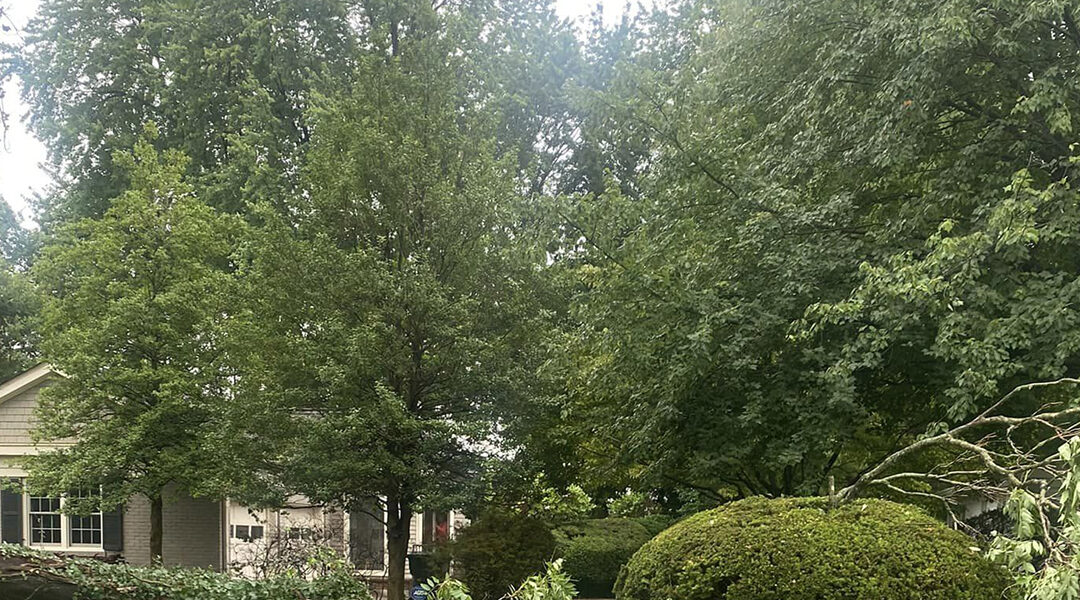
If you’ve spotted ghostly, spider-web-like structures taking up residence in your beloved trees, you likely have a case of the webworms. These little party crashers can turn a lush, green canopy into a sparse, struggling one, so fast action is crucial.
As Louisville’s reliable tree service, we at New Leaf Tree Service have compiled this comprehensive guide on how to treat webworms in trees. Keep reading and start reclaiming your arboreal paradise today!
1. Keep a Vigilant Watch on Your Landscape
You need to conduct regular inspections to keep webworms at bay. These crafty little critters are experts at hide-and-seek, nesting high up in the branches where they can munch away undetected. A pair of binoculars or a long-handled mirror can come in handy for those hard-to-reach spots.
Aside from loose silky webbing, look out for:
- Pale green or yellow egg masses on both sides of leaves
- Yellowish or tawny larvae with fine hairs and reddish-brown pupa
- White adult moth
- Leaf damage
- Foliage reduction
Don’t underestimate the power of a keen eye and quick action! By catching the webworms in their early stages, you can halt their invasion cold, saving your leafy friends from a fate worse than defoliation.
2. Embrace the Power of Dormant Oil
All experts who know how to treat webworms in trees attest to the wonders of dormant oil, a potent elixir in the fight against webworms. The beauty of this concoction lies in its low phytotoxicity — or in layman’s terms, it’s less likely to harm your greenery. It works by smothering the webworm eggs and larvae, suffocating them before they can wreak havoc in your peaceful green space.
Another benefit of dormant oil is its easy availability; you can march down to your local gardening store or whip it up at home with some common household ingredients. Spray your trees generously every early spring for the best results.
3. Give Pruning a Go
For severe infestations, you might want to consider a pruning session. The aim here is to trim away the most heavily infested branches, thereby eliminating the webworms’ feeding grounds and residences.
Remember, be judicious with your snipping; excessive pruning can prove equally detrimental to your trees! Lastly, always make sure to clean up and dispose of all the trimmed branches and leaf debris properly.
4. Invest in Biological Control
Believe it or not, nature has its own infantry ready to wage war against webworms. Introduce braconid wasps like Meteorus hyphantria and Apanteles hyphantria into your landscape. These insects offer a safe and ecologically friendly solution to your problem.
5. Consult a Local Arborist
When your webworm woes keep spiraling out of control, or if you’re unsure about the right course of action, don’t hesitate to dial up a professional. Our veteran crew at New Leaf Tree Service knows how to treat webworms in trees and provide guidance on preventative measures for future invasions. Call (502) 419-9899 when your tree is sick to give it the best chance at recovery!

